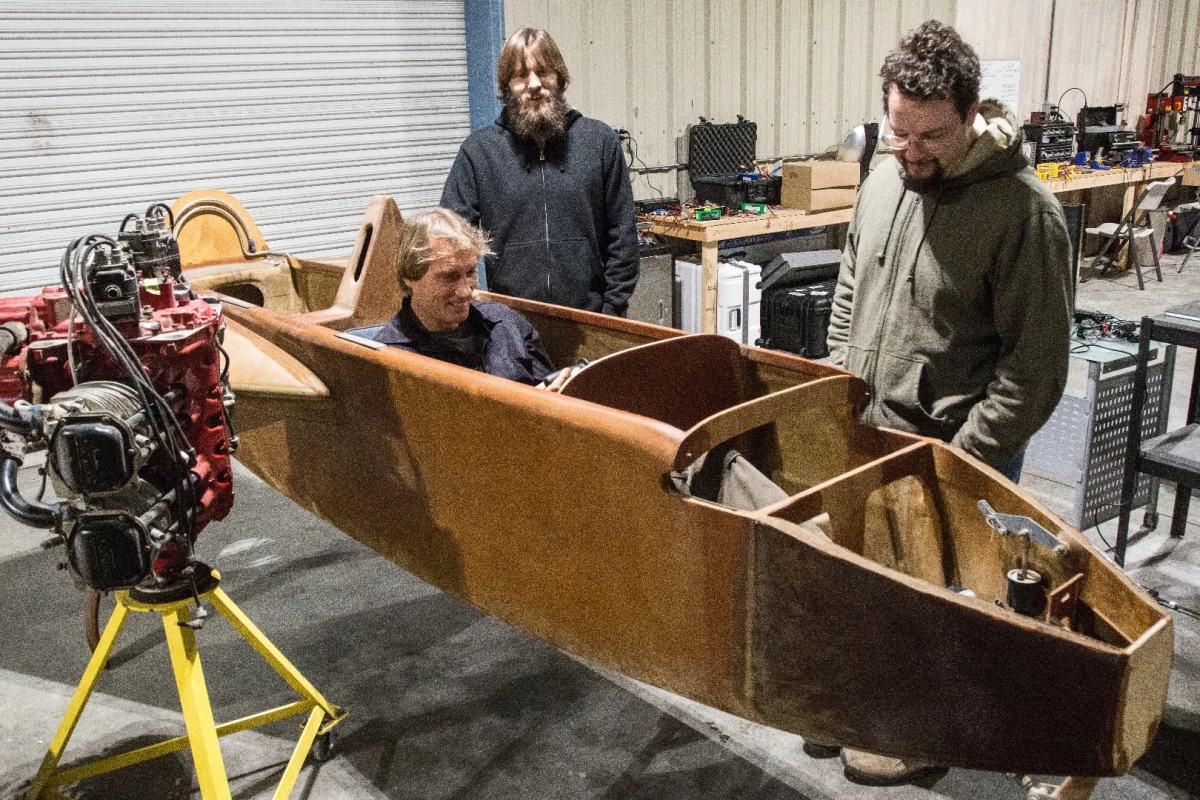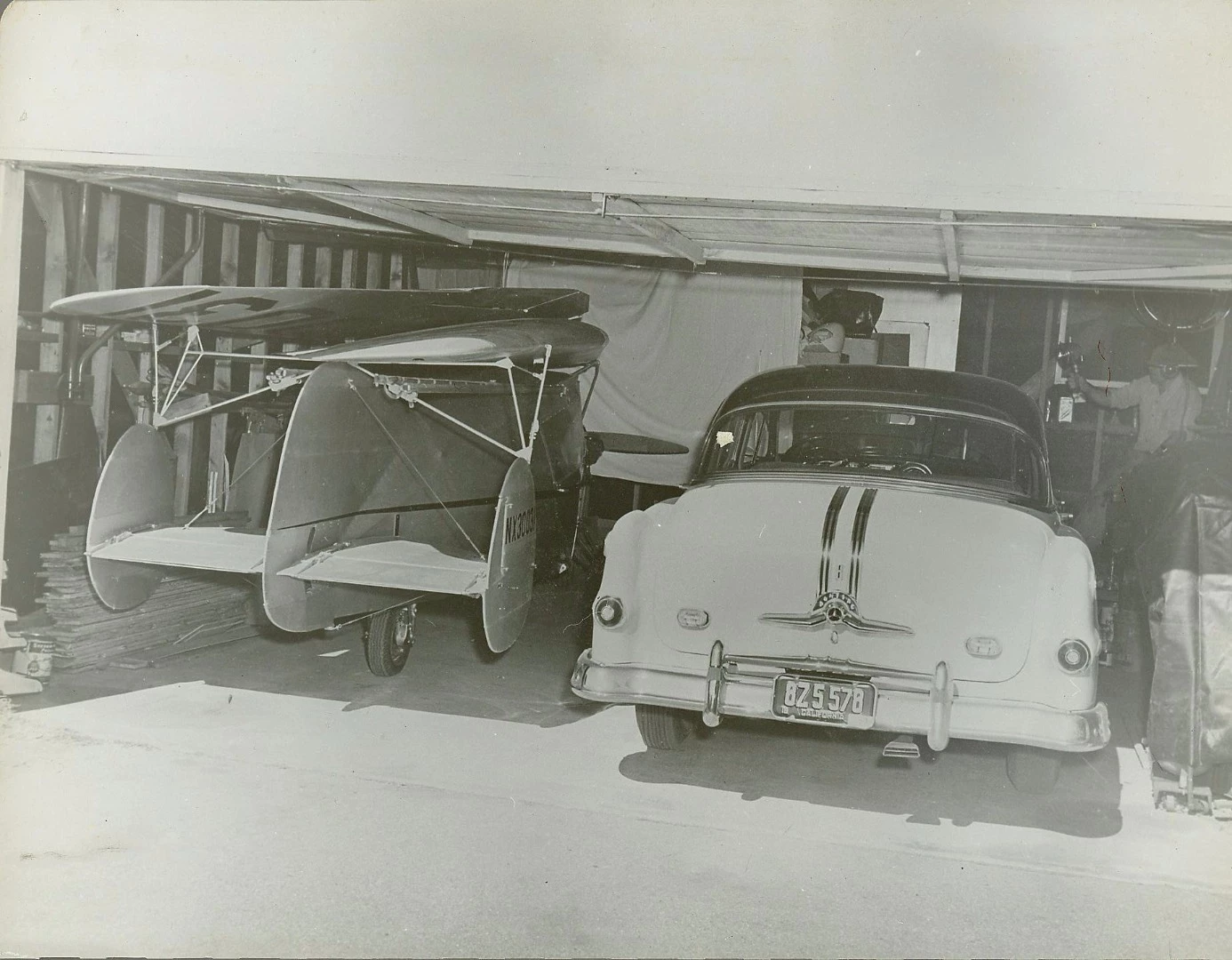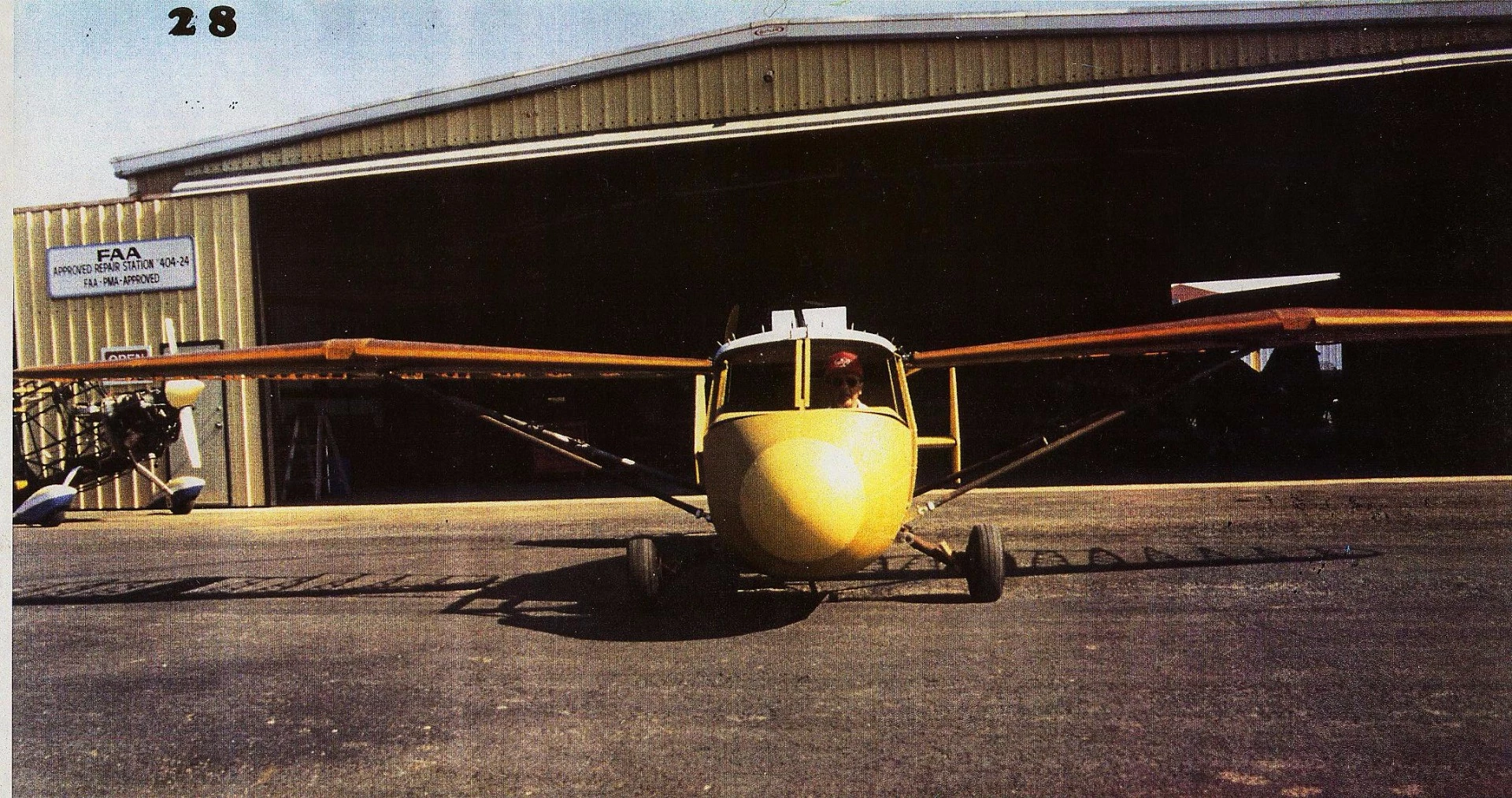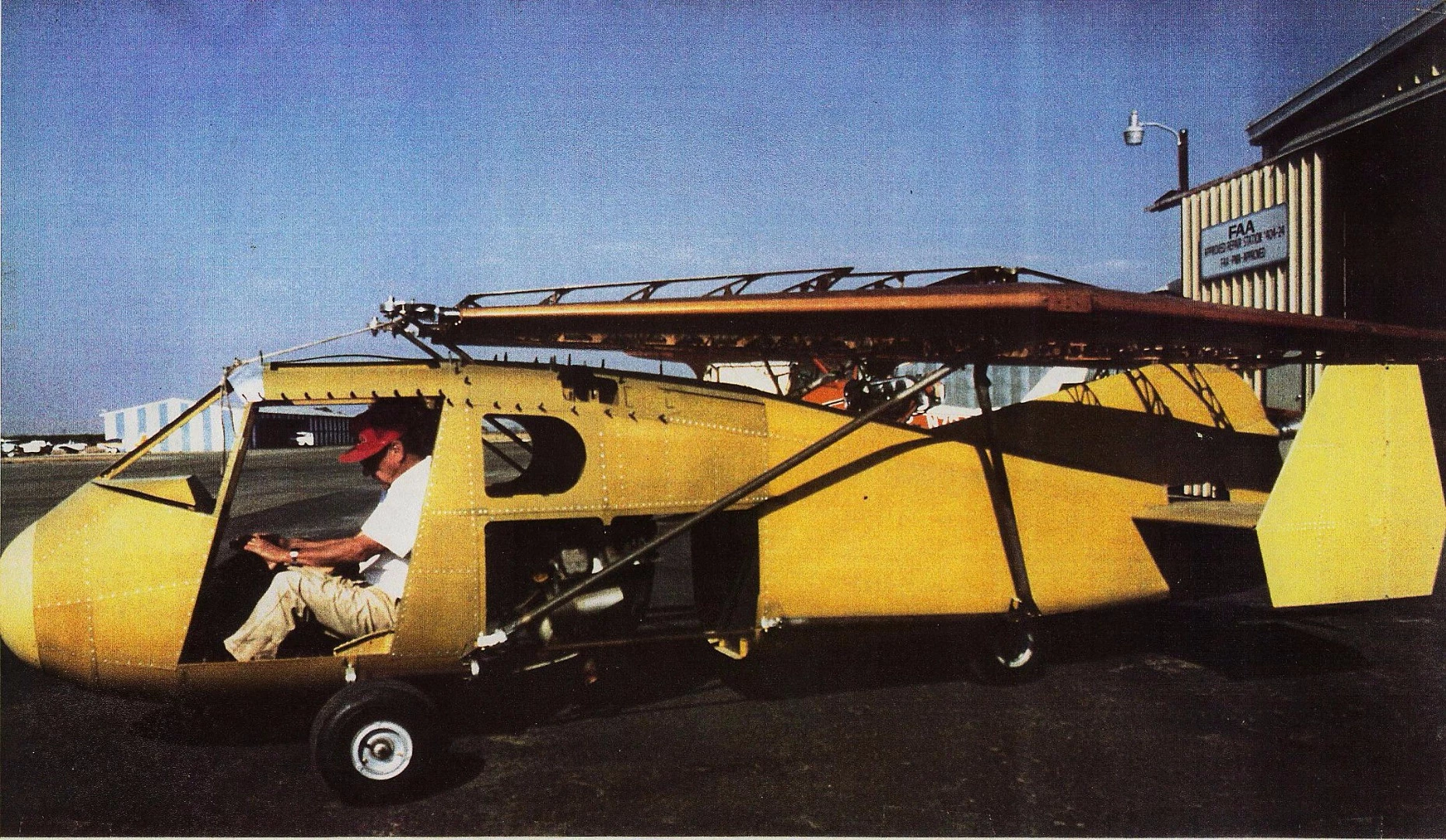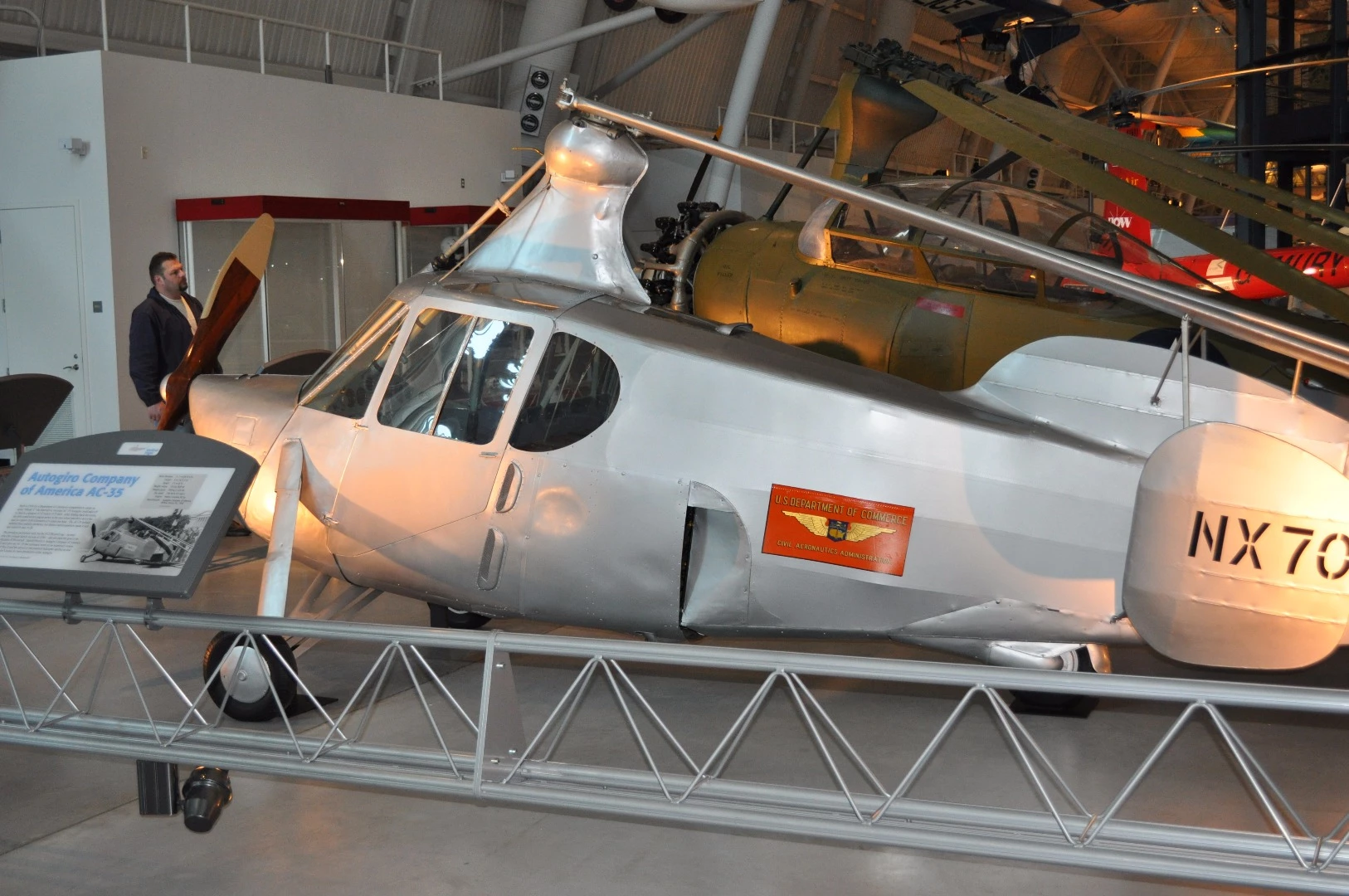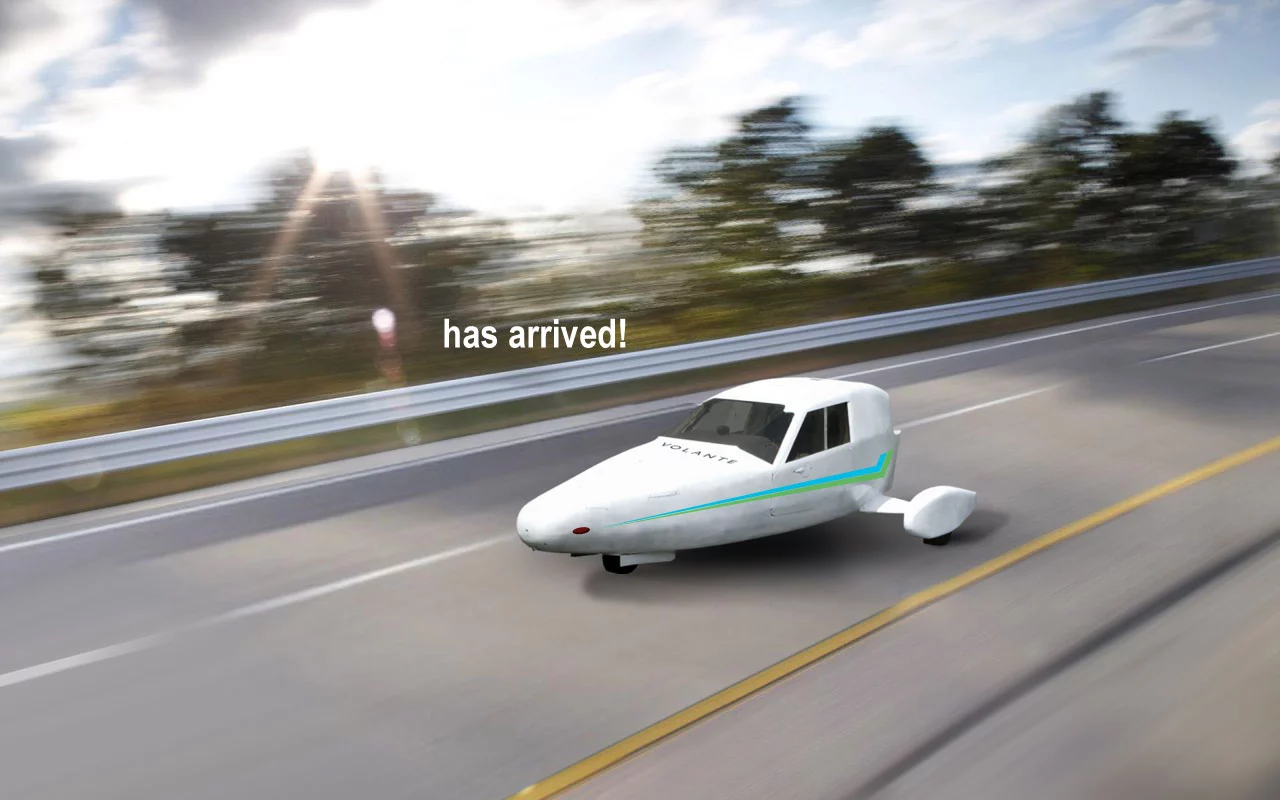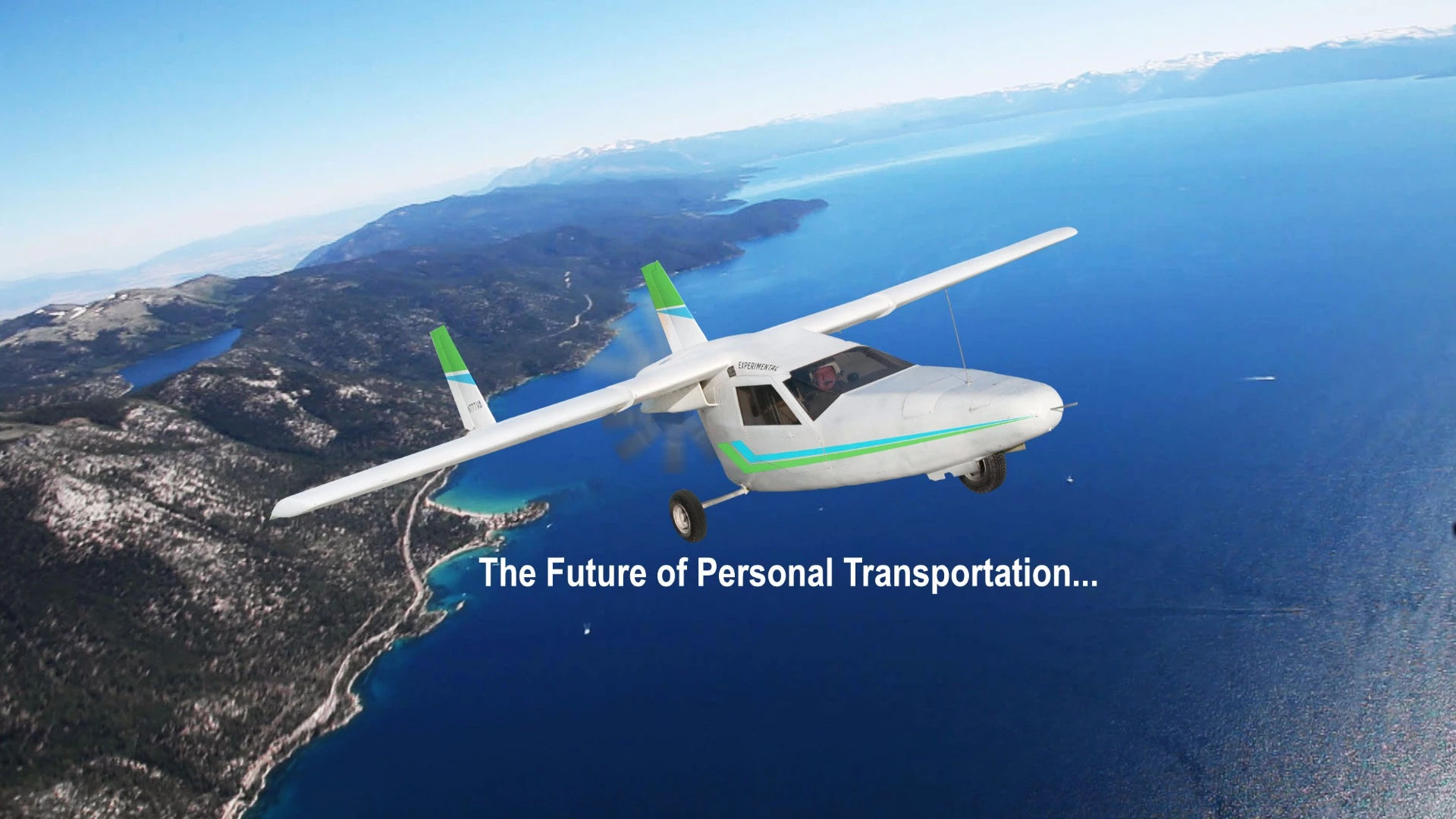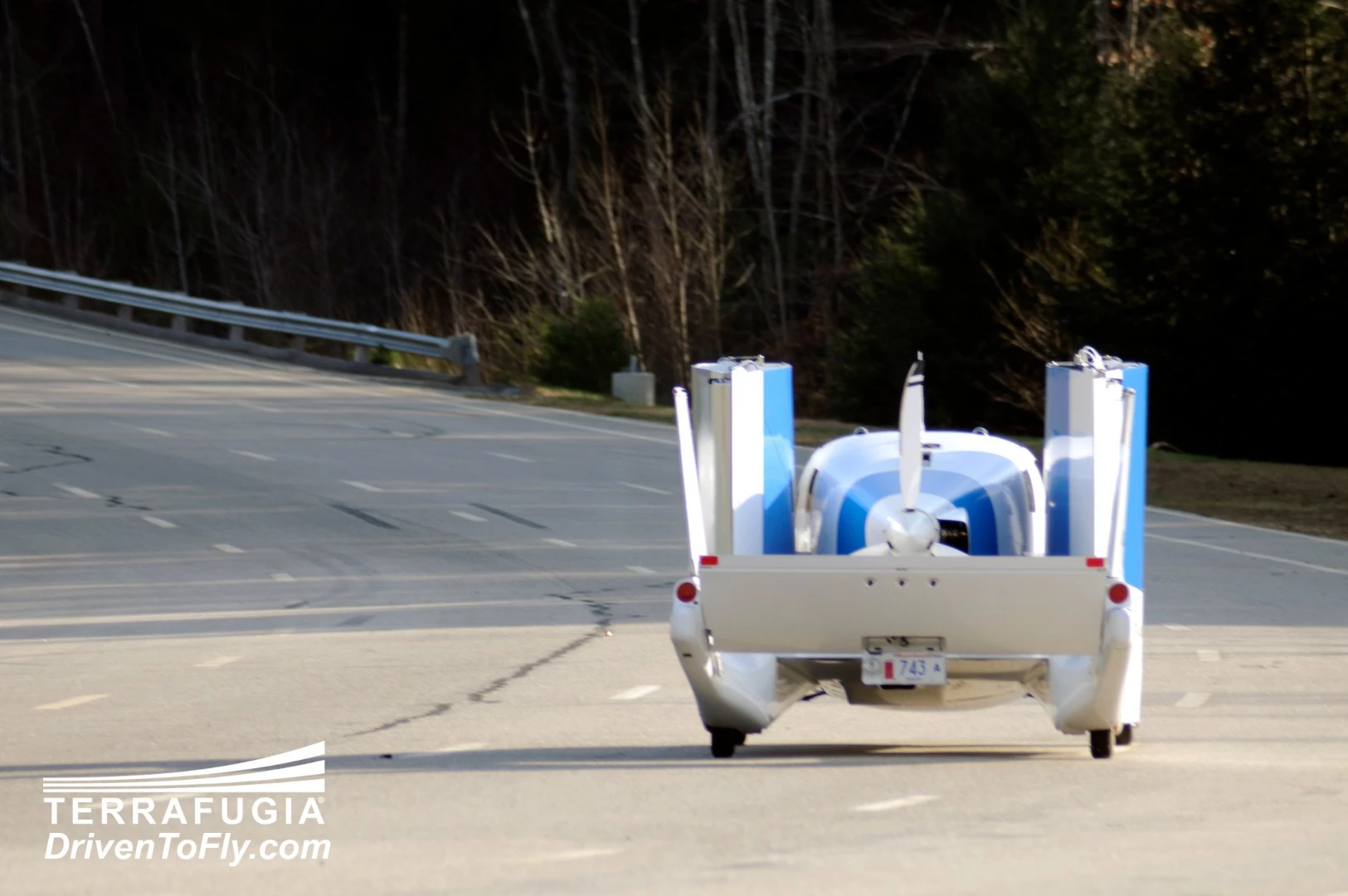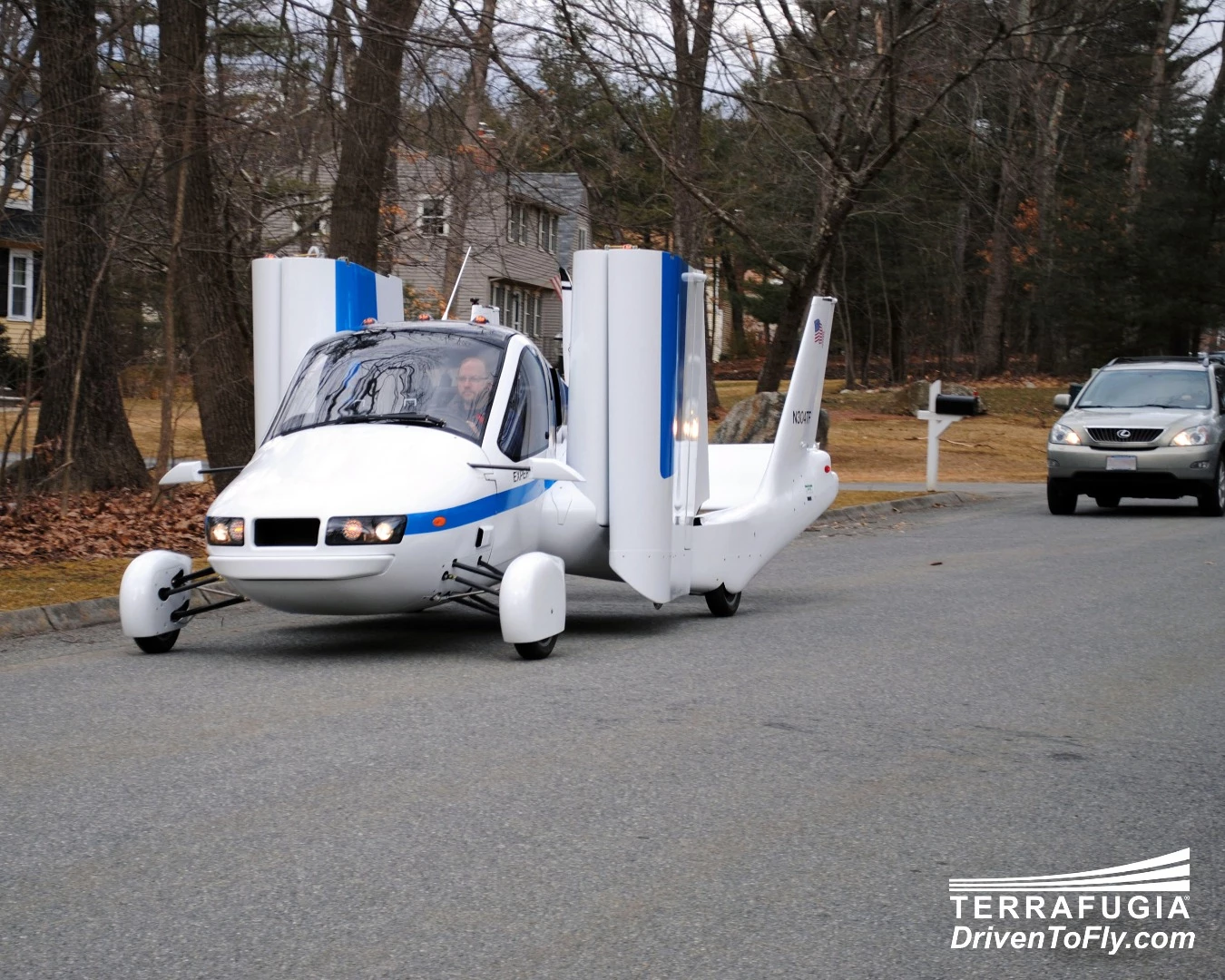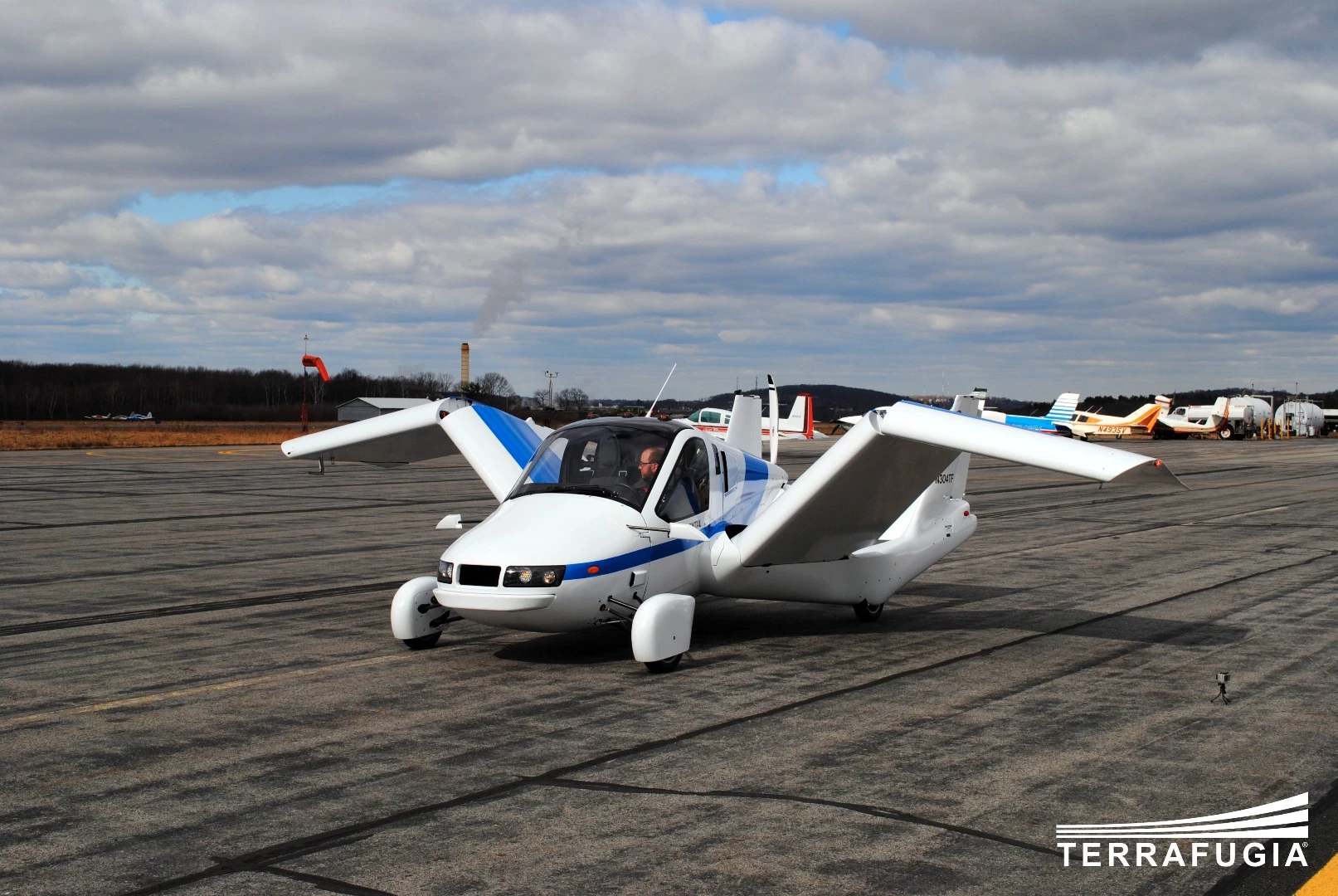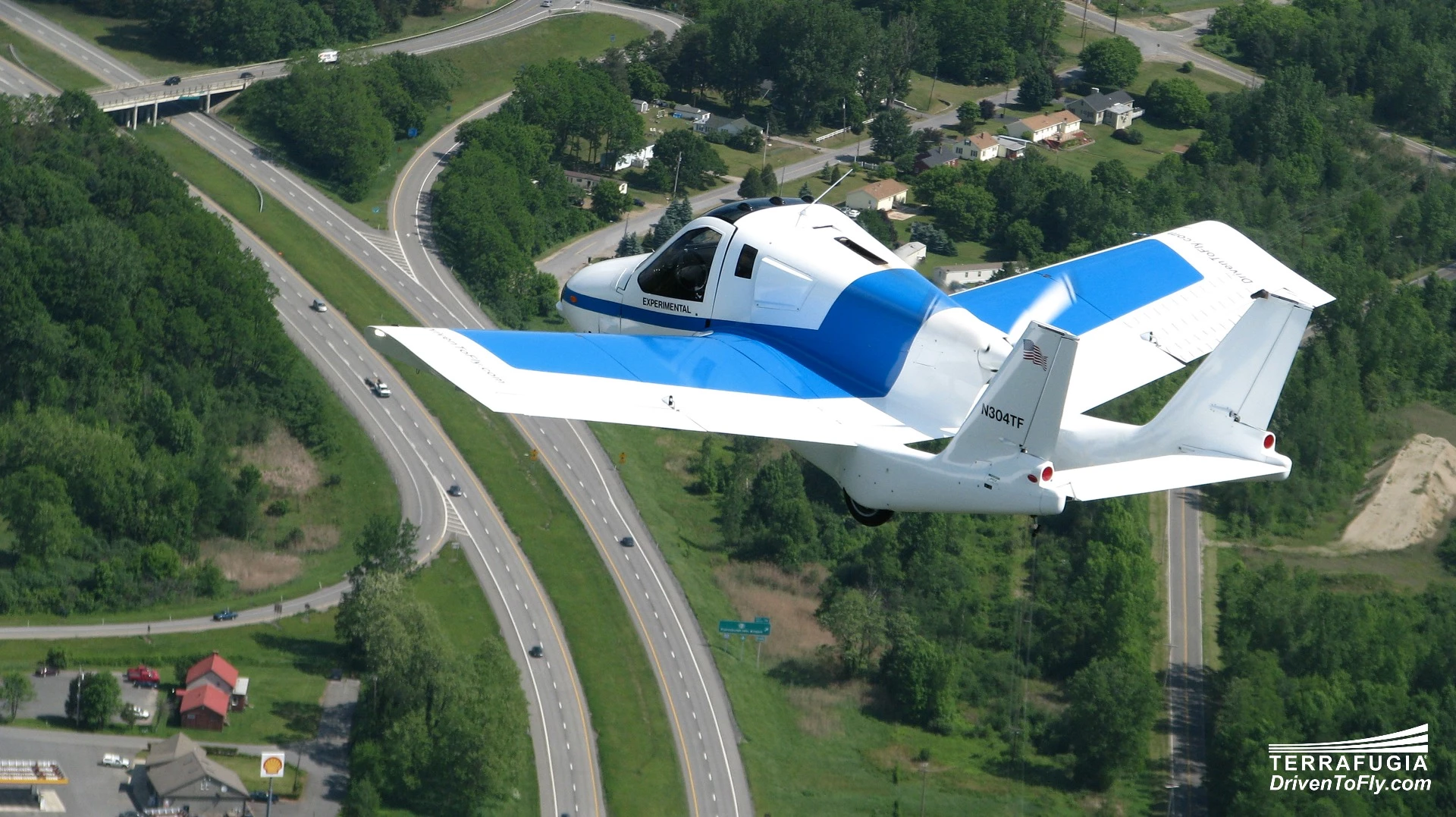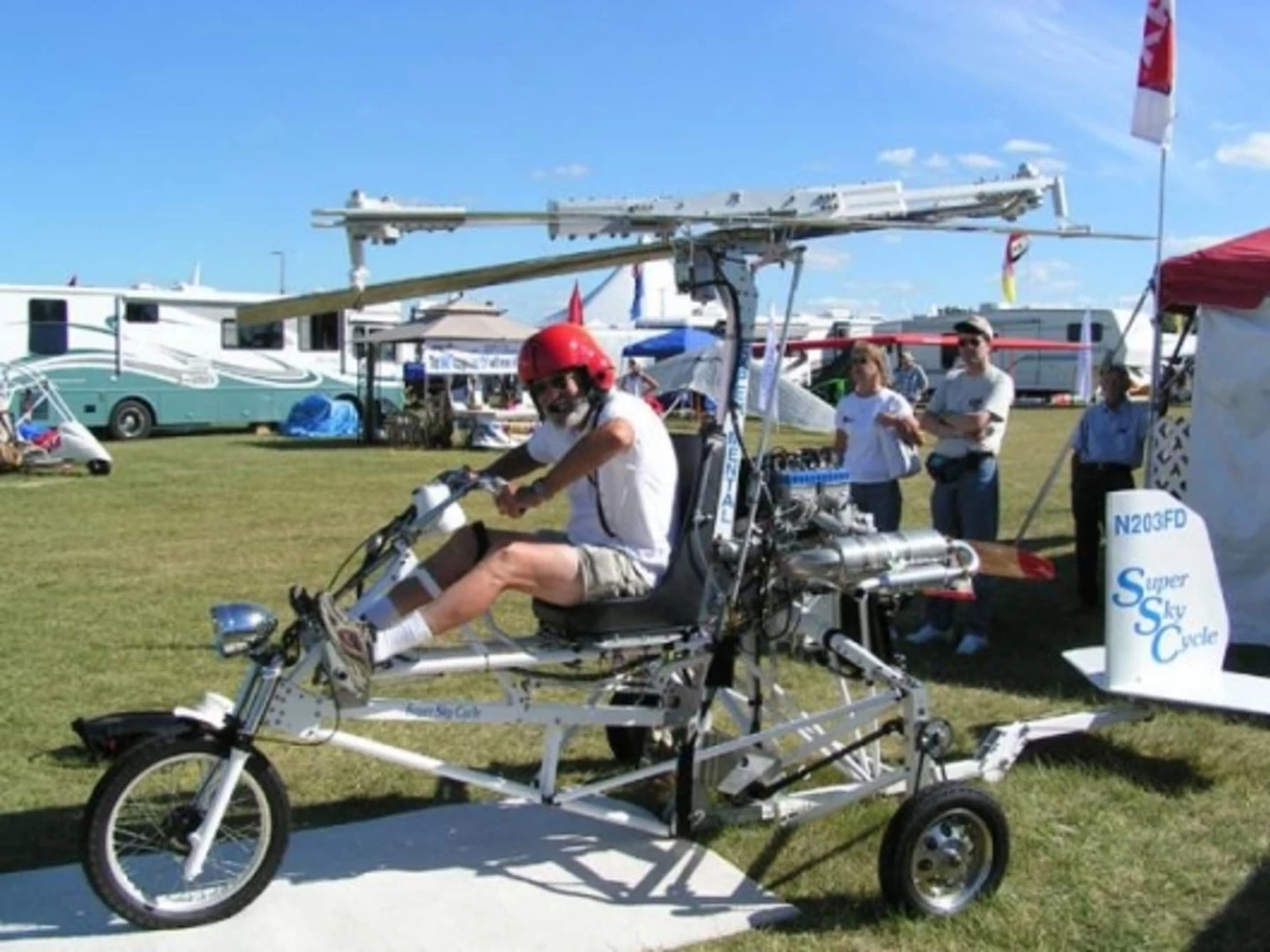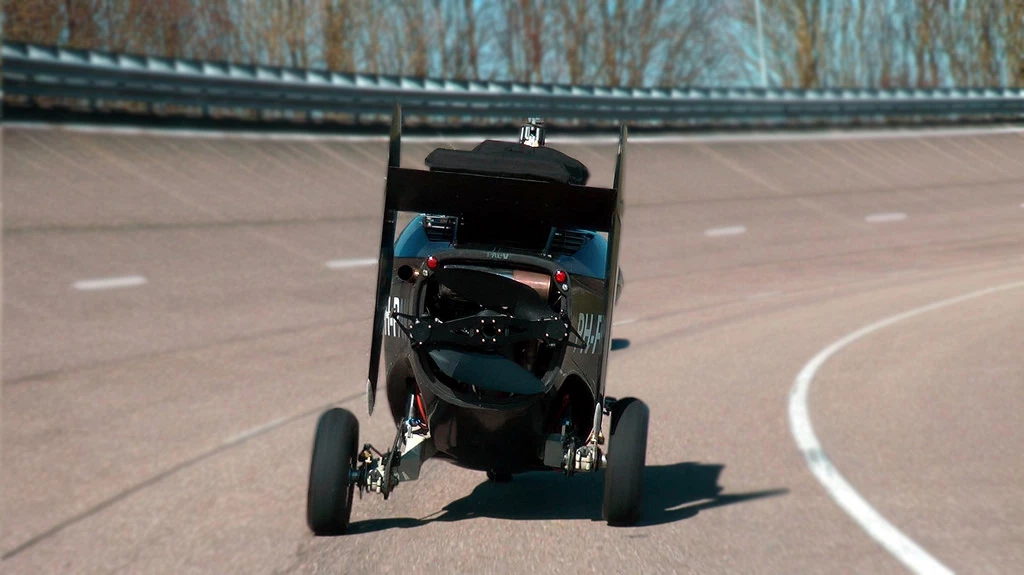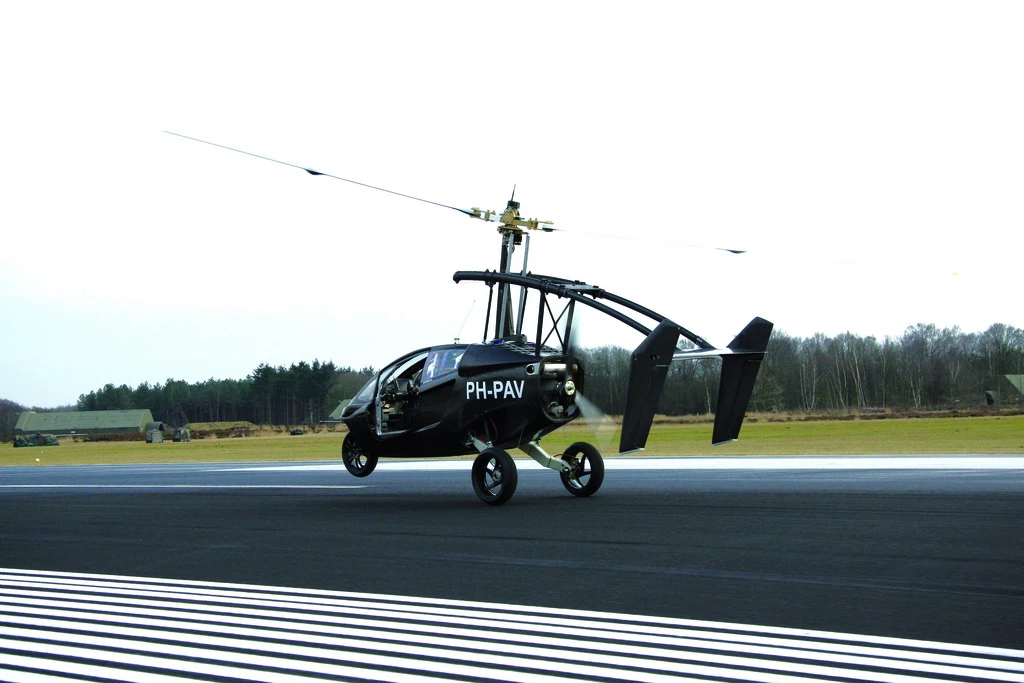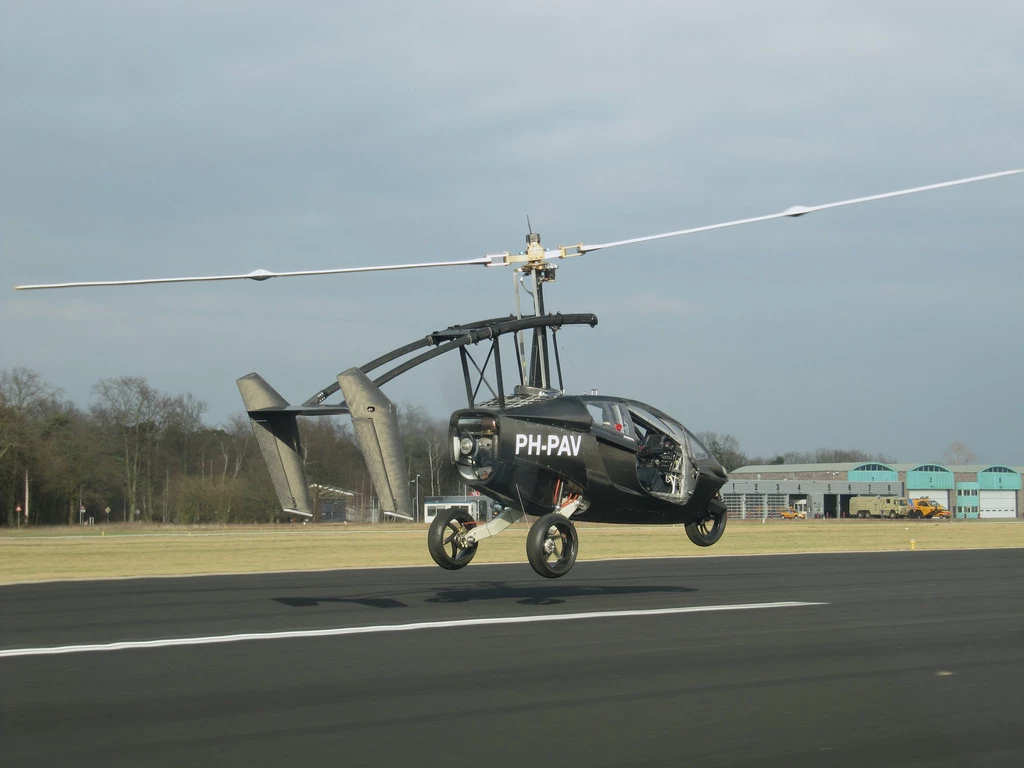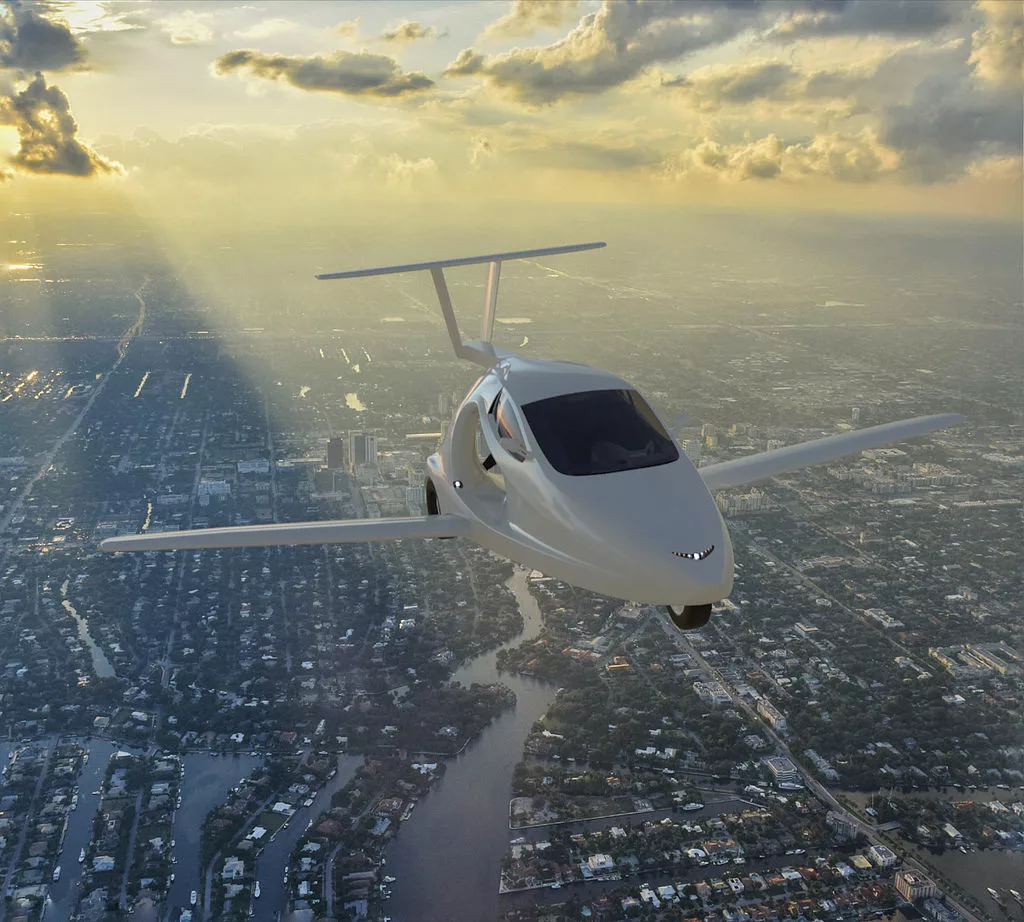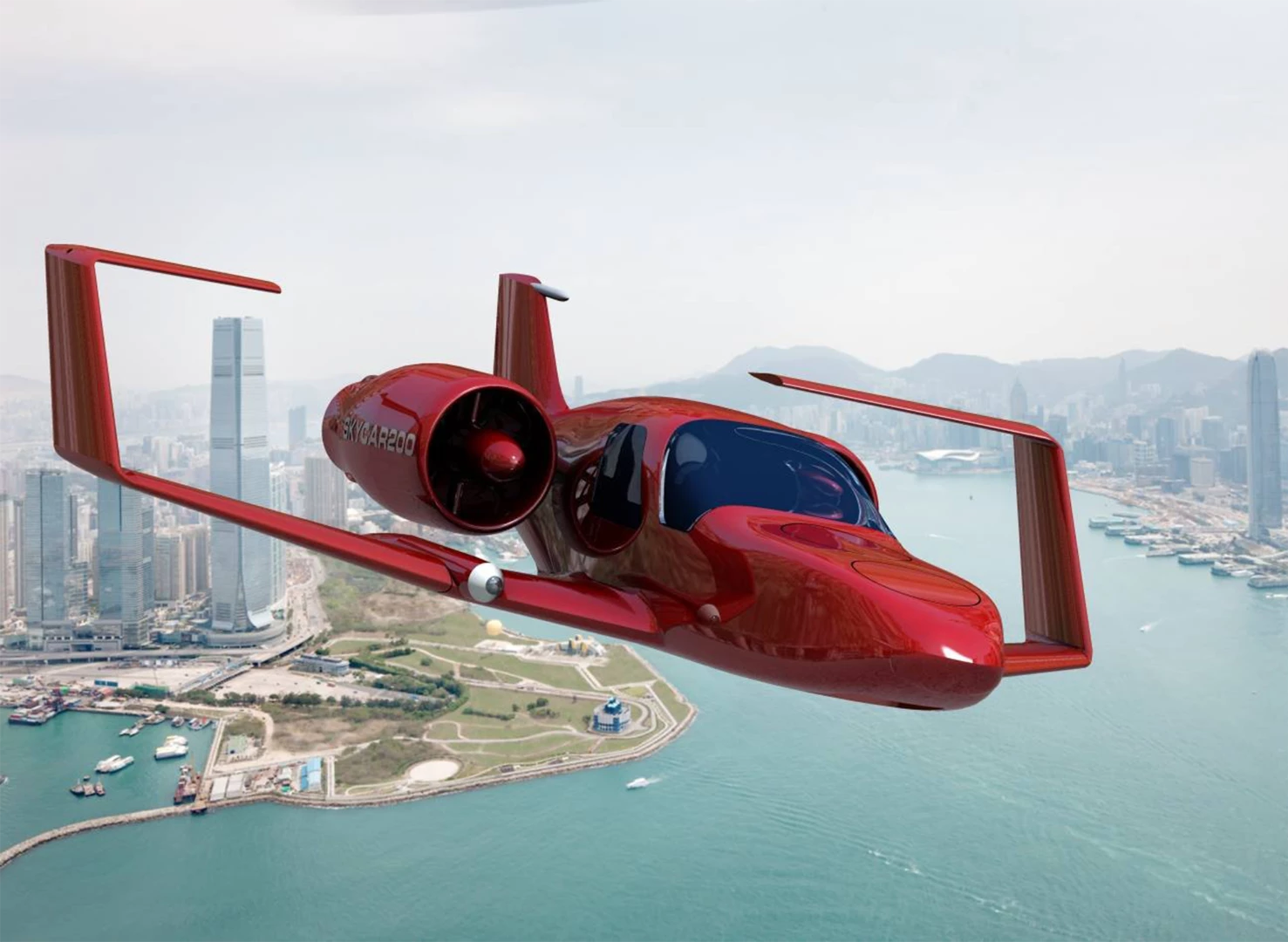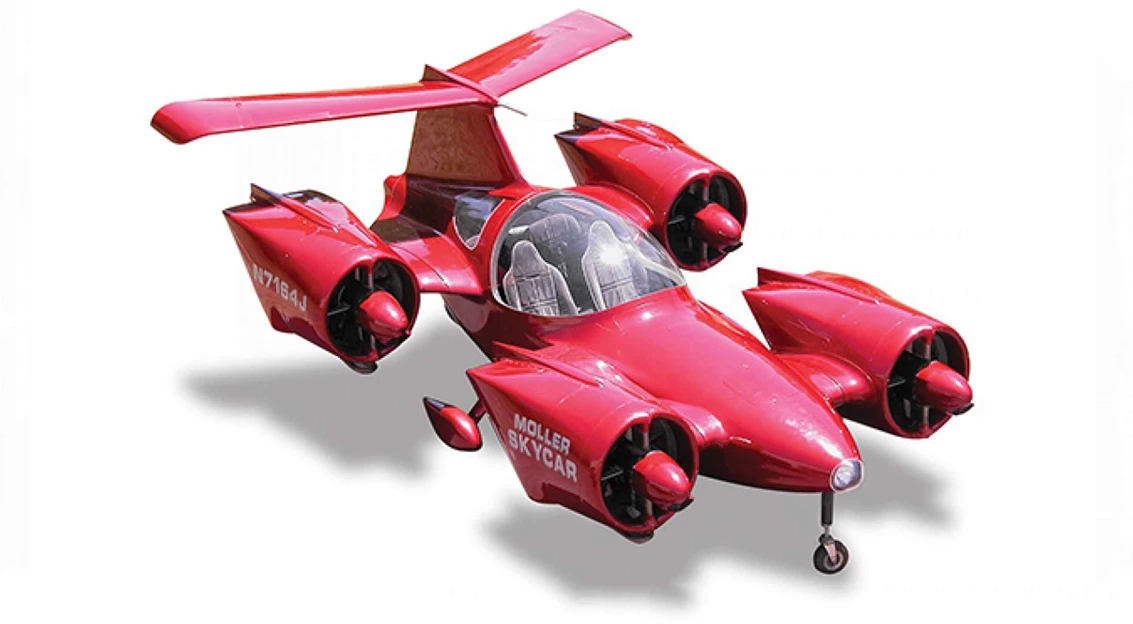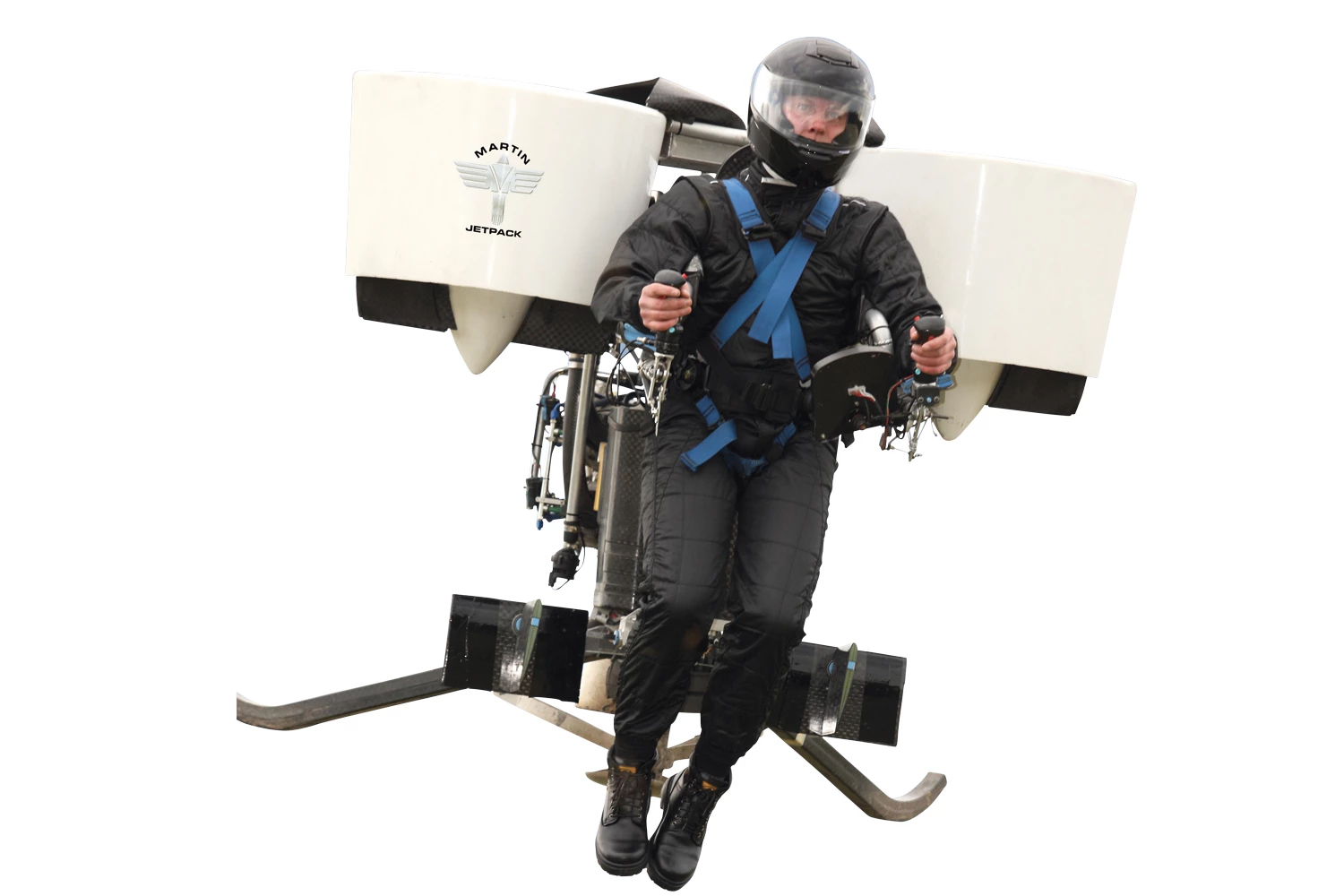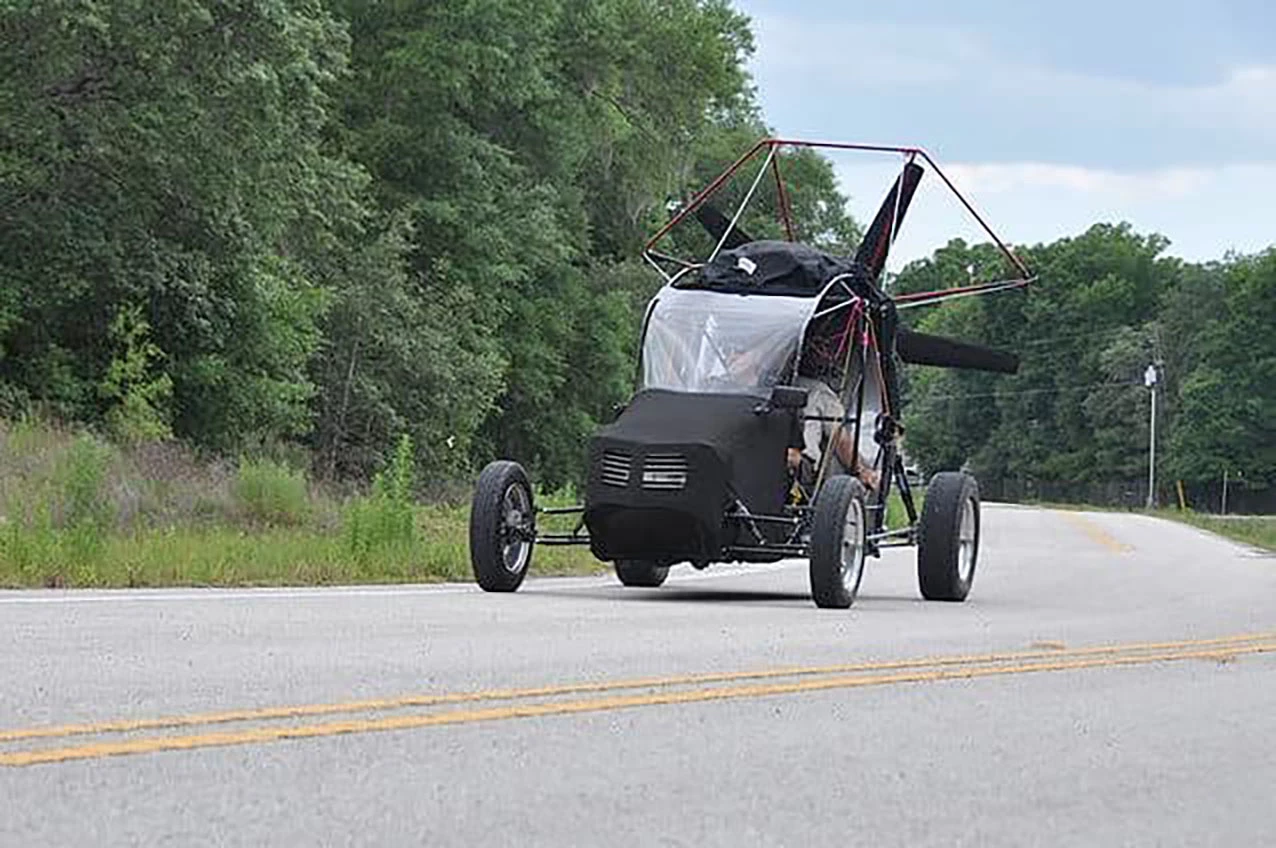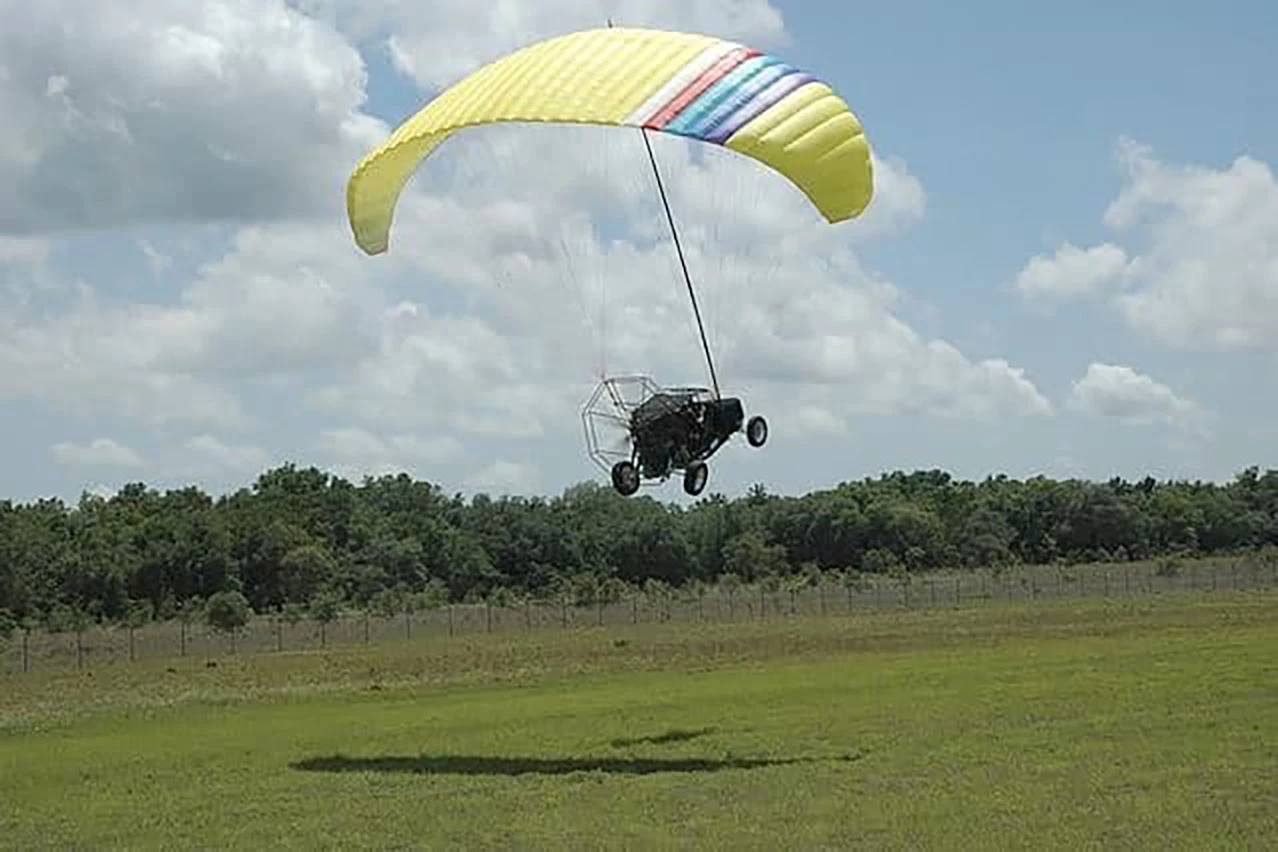Serial inventor Dezso Molnar is a man of many opinions - and strong ones at that. In fact, one short California road trip Loz Blain took with Dezso looks like it will stretch out to span five in-depth interview articles. Start out by reading about Dezso's background as an inventor, rocket scientist and musician, then check out his philosophical take on where flying cars should be going, and now for part three, Dezso speaks off the cuff about his favorite and least favorite flying car designs that are out there right now.
It's far from a complete list (he even missed out a few we put together in our own flying car roundup back in 2010) but since Dezso is about to launch the world's first flying car race series, it's fresh in his mind. We'll let him take it from here.
The Maverick
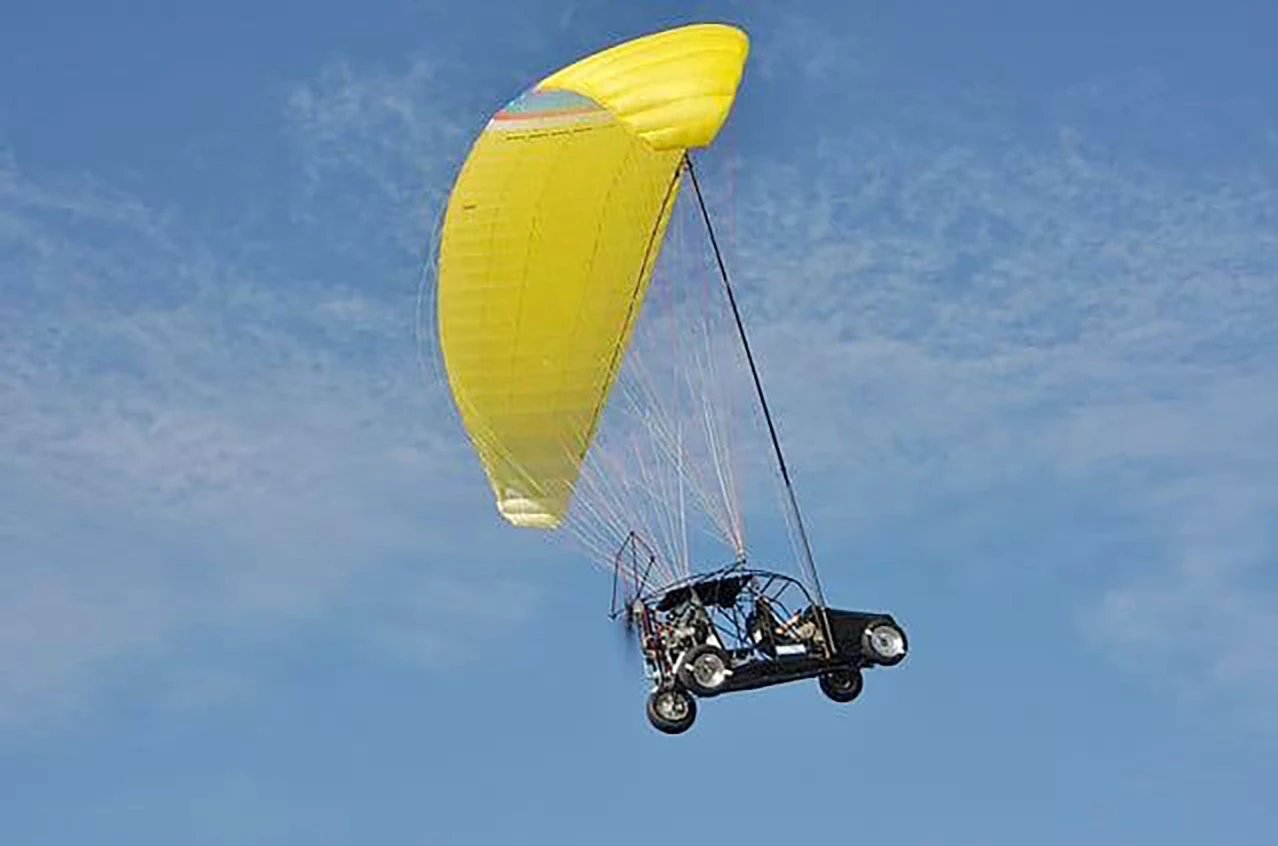
Just for a reality check, I like the Maverick a lot. It's a very slow flying wing, but it does what its goal is. They built it to travel around Africa in areas with few roads. Some roads might be extremely muddy, and the Maverick is effectively a four wheeled dune buggy that has a propeller on the back, as a pusher prop, and a parasail for a wing.
It's an extremely slow aircraft, it'll fly about 35, maybe 40 miles an hour at most. It has one speed, it takes off, lands and cruises at the same speed. That's part of the dynamics of the parasail wing. Tailwinds are your friend. You may want to drive into a headwind.
It has a carbon mast to set up the wing. You lift the fabric above the vehicle and then as you get moving forward, it inflates so you're able to take off and fly.

Imagine you're in some desolate part of a country, and there's a river that's formed overnight from a rain storm in the monsoon season. The nearest bridge is 3 or 400 miles away. So you can either drive that 3 or 400 muddy miles to cross the bridge, or you could pull out your ridiculous looking parachute and just fly over the thing and just be there in a couple minutes.
The other thing I like is that it's reliable, it's available for sale, and they've been flying and driving them for years. It's simple, and it provides you the value of both phases of travel when you need them. When it's the right time to fly, you fly it. When it's the right time to drive, you drive it.
The other thing I like is the pusher prop. Imagine you're on the ground caught in some horrible mud slick or whatever and you have no traction. I believe you can crank on the propeller to help blow yourself out of a mud puddle. That's great, because there's times when wheel drive doesn't work. So that's a situation where the evolution of the vehicle is leaning towards the value of flight and driving.
Zuck Plane-Mobile
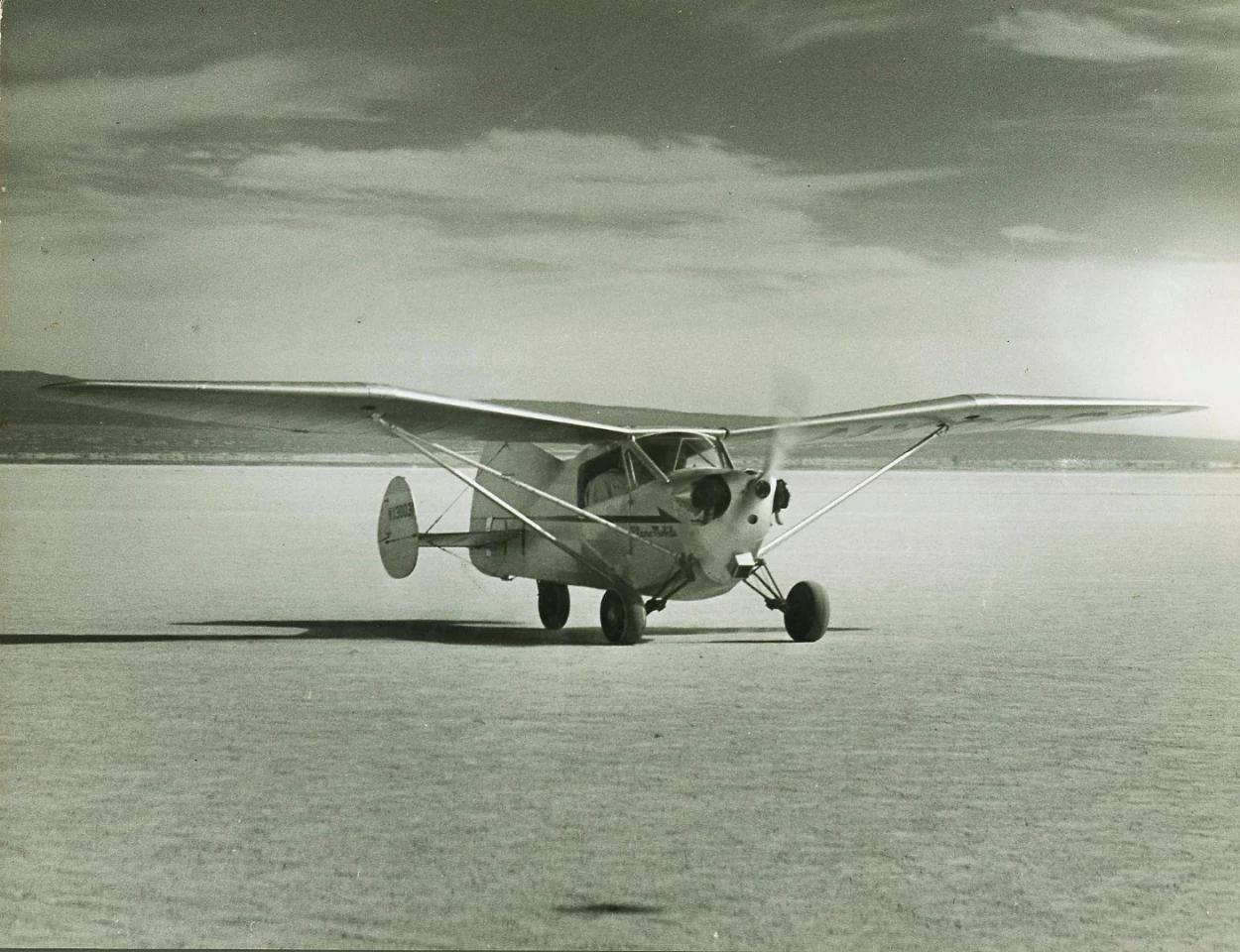
Another one historically that I like is the Zuck Plane-Mobile, which was a very simple tractor aircraft with a propeller in the front, the front wheels would steer, it had a powered rear wheel and wings that would fold up above the roof.
It was an ingenious and simple approach. There were some other advantages that he tried to build into the wing system, but whether or not that worked, I'm not sure. He was trying to get away from ailerons, so he did a couple of reaches on the design, but I like it.
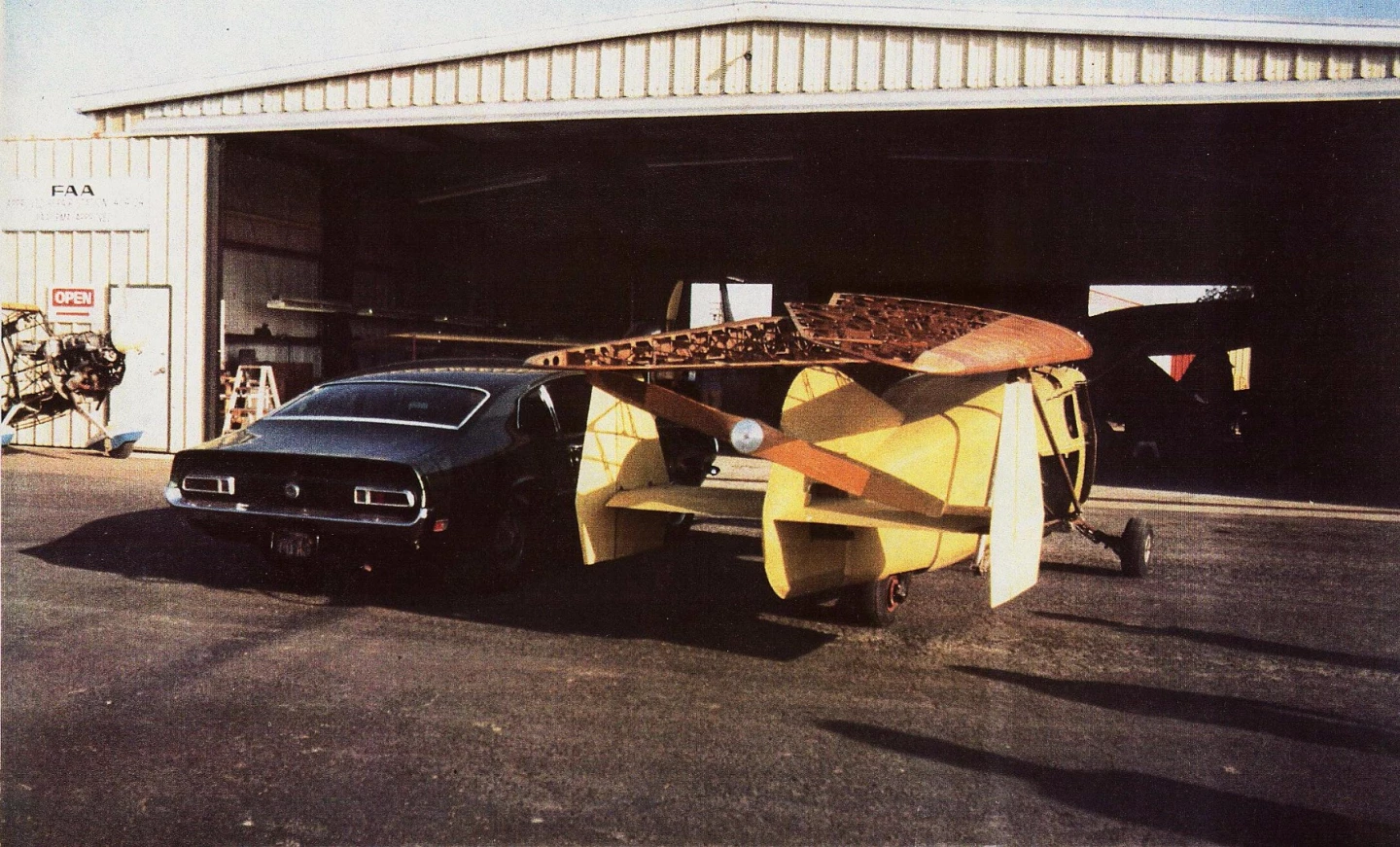
The Plane-Mobile was back in the 50s. It was a two seat aircraft. I personally don't like two seats if I can avoid them, because usually you end up driving by yourself. Eighty-five percent of cars have one person in them. I don't think you need to create the additional challenges of making something small on the road that folds up, whatever, for two people that aren't gonna be there. Just focus on one for god's sake, and let's get going folks.
Pitcairn AC-35

The AC35 was a Pitcairn gyroplane made back in the 1930s that could also drive on the road. It flew well and I believe made a flight from the White House lawn.
It had a driven rear wheel. It wasn't fast on the ground, it rolled 25 miles an hour tops.
I've had my Gyrocycle to 140 miles an hour, and could easily pump it up to 200 plus. I like things that are quick on the road, I like road superiority. It's a very fast bike that leans into turns, it doesn't pull wheelies so I'm able to open the throttle in every gear, so it's just flat-out fun and quick.
The Volante

One fixed wing that's working is the Volante from K.P. Rice. It's essentially a winged aircraft, and a trike you can drive on the road [with the flight gear as a separate trailer you can bring when you need it]. He has a first version that he's flown and driven.
Terrafugia Transition

The Terrafugia Transition was well publicized recently. Again a risky business model where they took advance payments to fund development, and made promises for delivery slots. I have a friend who bought one of the places on it, and has long since abandoned it.
The "deposit for aircraft" business model attracts buyers who are perceived as supporters, but they are actually hedging. Often a purchaser will put down $10k or less to hold an early serial number with their deposits secured in an escrow account. The deposit is safe, so they purchase 3 or 4 serial numbers at an ambitious dream price touted by the builder of say, $100K. The aircraft company borrows against those deposits and goes deep in debt to do development. The costs skyrocket to double or worse for the plane such as with the Terrafugia and Bede and Icon, so the buyer sells 3 of his 4 positions just below market cost and gets a free plane. This cannibalizes the buyers that could have paid market rate to the manufacturer. If I had a dollar for everyone who suggests I do this I could retire to Geneva.
Terrafugia did get one Transition flying and driving. It's got four wheels and two seats, so it's heavy and complex. I give him much credit for trying to fit in the light sport category, but he stacked the deck against himself by taking the position that he needed to make something for people who wanted to buy a safe vehicle.
I don't really care about people that want safe vehicles. I care about people that want to BASE jump. Those are the people that drive things in the new world. I'm not designing for people who are focused on their fears, or to provide opportunities for their fears to be extended and coddled. People in the motorcycle and experimental aircraft culture are cautiously optimistic. I support them.
Larry Neal's Super Sky Cycle
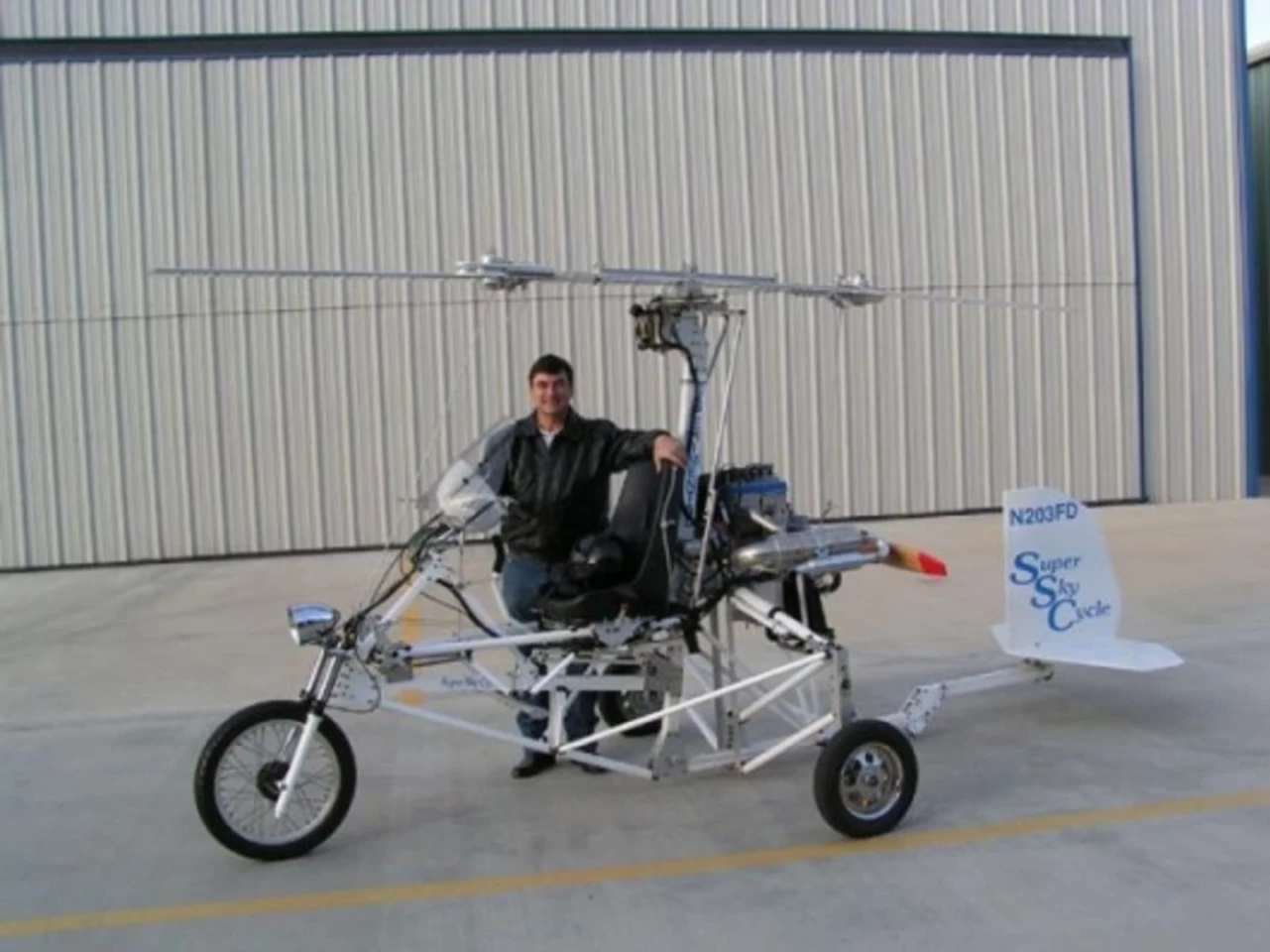
Larry Neal has passed away, but he made a vehicle called the Super Sky Cycle, which is a gyroplane and a trike. It's a combination aircraft and birth control device. It isn't very pretty. It does fly well, but doesn't drive as well.
Larry made a few of them, and there's a woman who has inherited one from her father. I met him at Oshkosh a few years ago. I'm in contact with her, and I'd like her to come out and race it.
The Pal-V
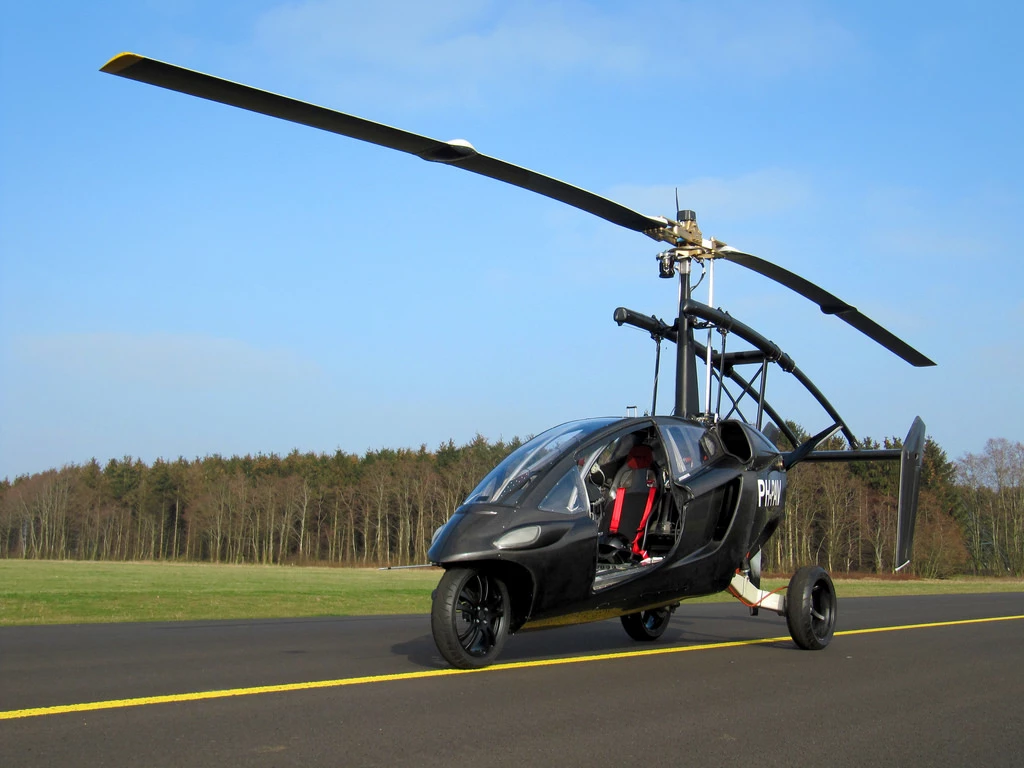
Another flying motorcycle that's similar to mine is the Pal-V, which is a Dutch version of a gyroplane using the Carver Car as a base vehicle.
A very expensive proof of concept was built. There are claims that they will bring it to market, but again it's dwindled, and gone down the vortex of military and police justifications ... These things are very good attention getters, but they generally don't go beyond that, because they don't come to market as they claim.
The sad thing with the Carver car – it's an amazing car but they couldn't find the right economics to bring it to market. It cost them as much to build as the market would bear. It's a tilting tandem seat, three wheeled vehicle. It is brilliant. I've been to the factory in the Netherlands. But Pal-V used a failing car company as the basis for a languishing flying car company.
Caravellair
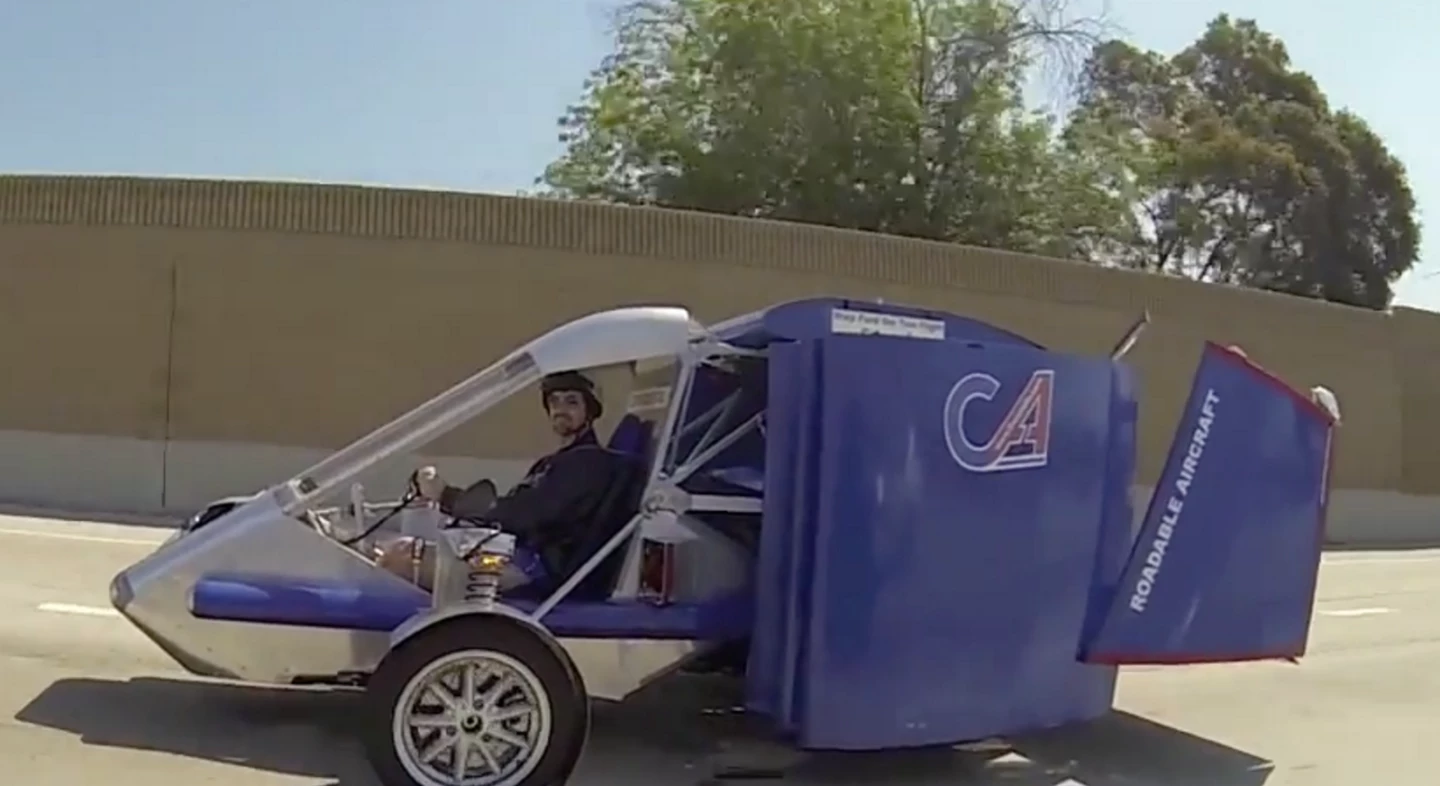
A friend of mine, Joe Caravella, is working on an aircraft called the CaraVellair that fits the motorcycle category on the ground, with three wheels, and has wings. He hasn't finished the wing construction, but I'm hoping that he will be able to complete what he's built so far and race it.
Switchblade
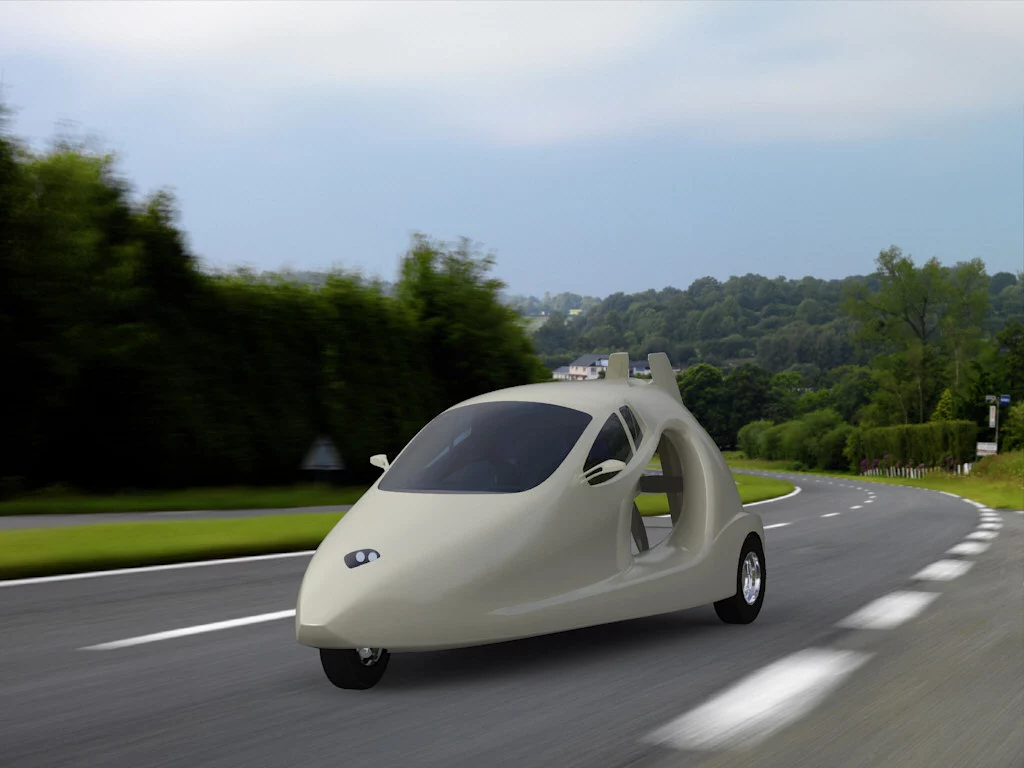
Another design that's similar to Joe's is up in Auburn, called the Switchblade. They are still fabricating a first vehicle, and if it works it could be a nice performer on the road, probably over 100 mph, and fly over 100 mph since the wing is small.
On VTOL flying cars
Right now, I'm interested in electric propulsion because it's so simple to use, you don't have the additional complexities of a transmission system, and you can pass smog checks. I don't think vertical takeoff and gyroplanes are the way to go with electrics now, because their power loading is extremely high. I think very efficient wings and an aircraft that's designed for best range is the right approach to operate in the existing road and airport infrastructure.
The Moller Skycar
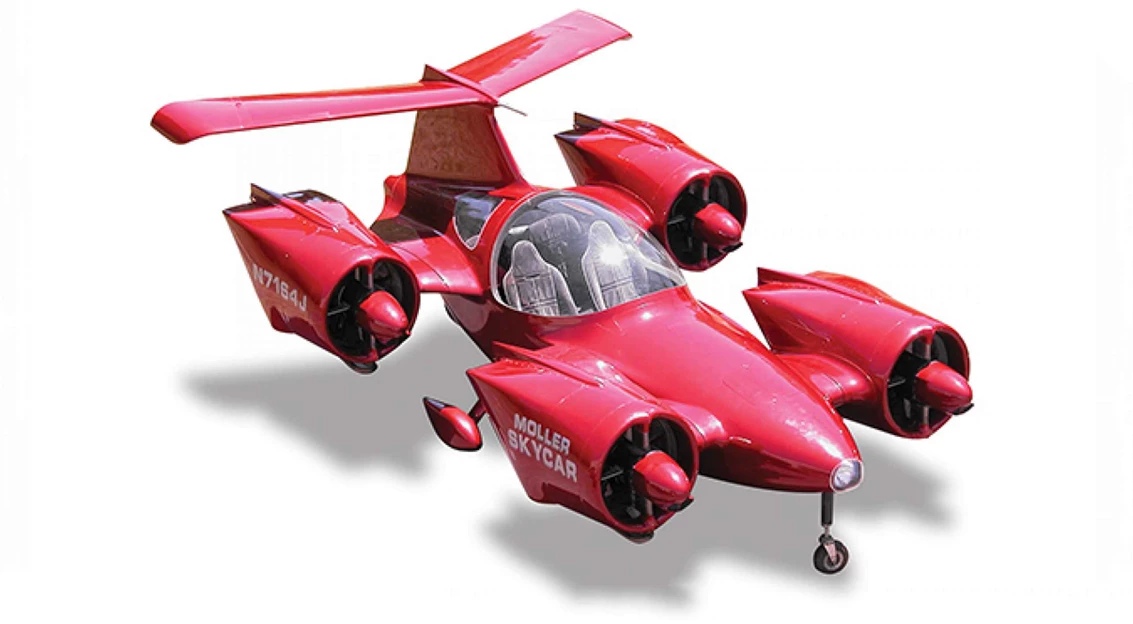
The Moller Skycar – that is not one of my favorites. I think he's done more to stop people from developing flying cars than anybody, because he has an extremely strong resume. He started the Supertrapp muffler company, which was a good muffler company and I believe he spun it out to Kerker.
His vertical takeoff machine, he claims that it flies, it has never traveled … It just hovers, usually attached to a crane by a cable. It's designed to be a flying machine. But many people have the perception that because he has a very strong academic background, that his machine is an eventuality, and it actually stops other people from trying.
A friend of mine wrote the patent for it, and I have other friends that used to work at the factory. I saw it for the first time almost thirty years ago. If the thing were to work, it's extremely loud, has extremely high power loading, high fuel usage, and it's not what I would call a threat.
He's married himself to the idea of vertical takeoff and landing. I ask people with similar fixations, have you ever flown through the air? If you did it with a set of wings that required a runway, does that mean it was a useless experience? Of course not.
Helicopters have not been terribly successful in their acceptance in the public. We have seven billion people in the world and only about 60,000 helicopters, that's it. There's not many helicopters because they're complex, very expensive and challenging to fly. They're good if they have an engine failure because they can autorotate to a safe landing.
On manned multirotors and jetpacks

Some new attempts at manned vertical takeoff quadcopters – Ehang, VoloCopter, et cetera, work great when they work, but when they stop running, then usually the failure mode is to drop from a high altitude. Flying close to the ground is not legal in most places. There's no autorotation capacity built into the propeller blades because they're just too short.
You can't say "we don't have to design it for failure because it has all these redundant systems to keep the propellers spinning." That's not what failure is about. Failure is about … Failure. What do you do when this thing fails? A powerplant is usually the thing that's gonna go. If one dies, why not the other three? Or seven? Doesn't the probability go up? What do you do then? Do you have an airframe or a system that will allow you to survive?

As far as manned multirotors, including the New Zealand Martin Jetpack, I saw that thing fly some years ago just above ground level. I was impressed instantly at its power authority. It looked very compelling to me. I thought, this guy's got it. Bless him, he's on the path and there's no reason for me to get involved other than to sit back and enjoy what looked like a really good engine/prop combination.
Obviously their challenge is that the piston engine is screaming, so the possibility of an engine failure when you're fully loading is the key concern. I don't know if it's de-rated at all, but my guess is it's probably running pretty hard. They have been experimenting with ballistic chutes.
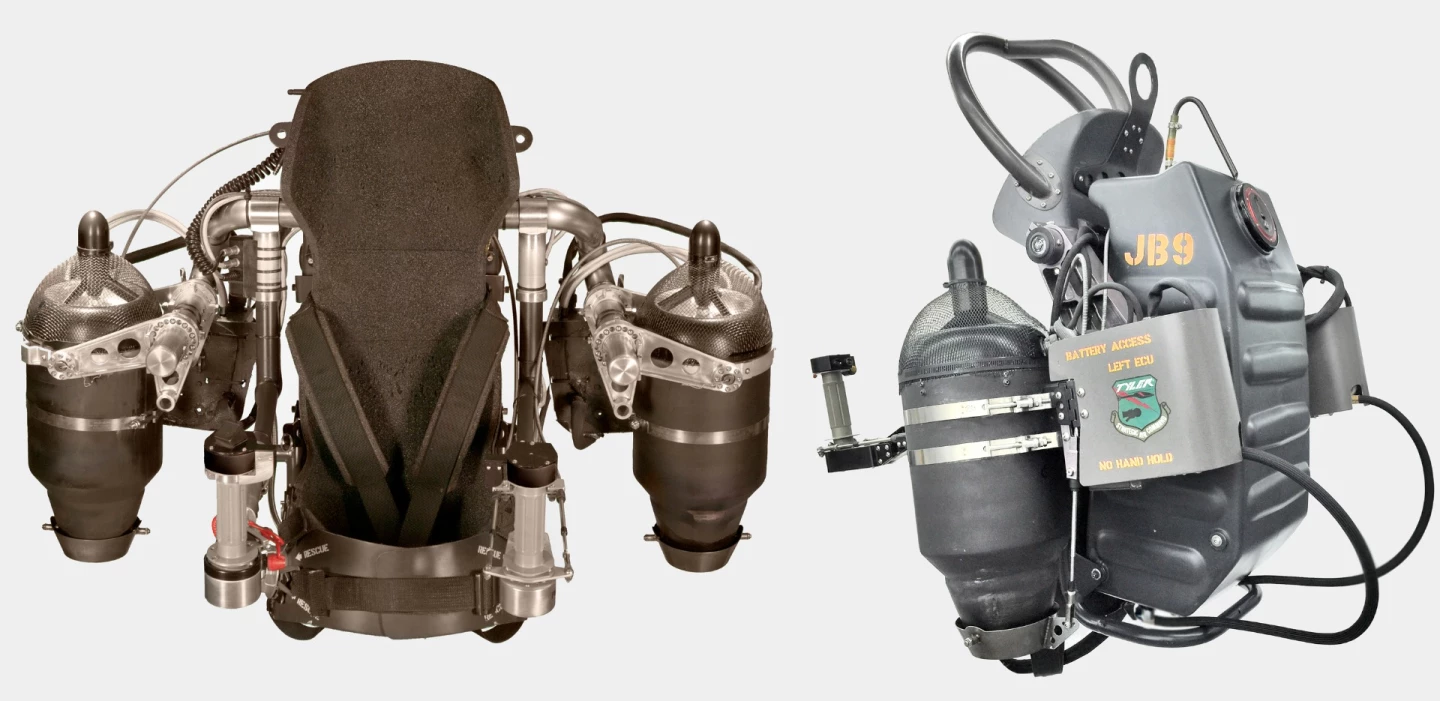
Nelson Tyler, he's just flown his new JB-9 turbine jetpack, which I saw about two years ago when he had it physically under wraps. He took the cover off for me to see it. It was a function of getting counter rotating engines running to complete it. I'm really happy that he's taken jet packs to a new level, and he's gone from 23 second flights to 12 minutes by using gas turbines, and applied all his experience with his hydrogen peroxide jet packs.
I applaud those guys for doing it. We're now officially in the age of jetpacks thanks to Nelson and David Mayman and their crew's efforts to have better jet packs. A 12 minute flight is certainly adequate for a person to fly somewhere, land, walk around for 2 or 3 hours if necessary and then fly out. And the restart capability of a jet is well established. Currently their flights are over water only.
The multirotors … god bless Ehang for stealing the show at CES! I really appreciate the fact that a comparatively unknown company was able to illustrate that if you want to scoop a lot of attention at a trade show, bring an aircraft that a person can get inside of. People care about that, they relate to that. Nobody cares about robots, but the minute you put a person in something, that interface, whether it's Neil Armstrong or Charles Lindbergh, or the guy that's sitting in a multirotor that's hovering somewhere … People can relate!
Putting Dick Rutan in a rocket powered airplane was a really smart thing XCOR did, because nobody cares about rocket engine tests on the ground. But when they put the engine on an airframe and a person in it, they grabbed headlines for their startup company. It creates the same kind of freak flag that I like to hang out and attract people who truly want to be involved in this kind of stuff, who may not be aware that you have these machines in development.

So the multirotor. Obviously you go back to Evolo a couple of years ago, Thomas Senkel flew their yoga ball for starters, and then the team fully developed a two person vehicle, the Volocopter. It's flying, and they are working toward some type of category certification in Germany. He did some of his work with Gabe DeVault at the Calfee shop and was impressed with my Gyrocycle. Thomas just recently did a first flight with an electric scooter and parasail wing called the "Skyrider One". He calls it the easiest way to have a flying car. He can climb with thermals and fly for a couple hours. I plan to meet him in Europe this summer.
Don't miss parts one and two of this interview series, and stay tuned for the next installment in a week or so!
